How Raclette Cheese is made - a short overview
Posted by Sonja Hoffmann on
Since we have adopted an alp and are expecting the first shipment of raclette cheese, we started to wonder how raclette cheese is made. On a recent visit to "our" alp we had the chance to take a look at the process. This post is not meant to be a recipe, it merely shows a few rough steps that go into cheese making in general and raclette specifically.
First we need happy cows! These were grazing in front of Alp Maran in Arosa, Switzerland:
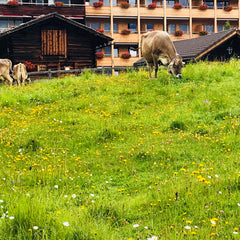 On this alp, the milk is being collected from 4 different alps in the area. The milk is being send via "pipeline" to the cheese maker.
On this alp, the milk is being collected from 4 different alps in the area. The milk is being send via "pipeline" to the cheese maker.
The raw milk has to rest for a while to allow the cream to rise. Raclette cheese is being made with unpasteurized milk with 3-3.5% fat content. The milk is then poured into a big vat where it is warmed to a specific temperature while being mixed with some cultures and rennet to achieve the right acidity and for coagulation.

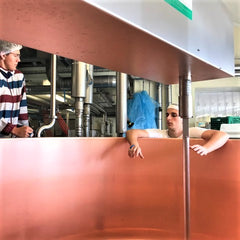

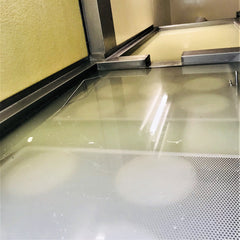 Now it's time for the brine bath. By submerging the cheeses in the salty liquid the salt is pulling moisture from the surface and begins forming a rind. The secondary purpose is for the cheese flavor. The brine is often reused for the next batch of cheese.
Now it's time for the brine bath. By submerging the cheeses in the salty liquid the salt is pulling moisture from the surface and begins forming a rind. The secondary purpose is for the cheese flavor. The brine is often reused for the next batch of cheese.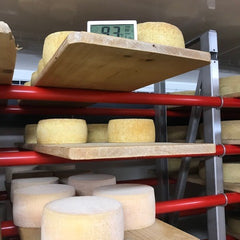
Finally the cheese is stored in shelves, where the cheese makers carefully monitor the temperature and humidity. Wooden shelves are being used to keep the moisture level right.
During the aging process, raclette cheese is washed and turned in regular intervals. It takes at least 90 days for the raclette to be ready for the retail floor.
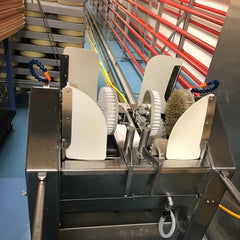
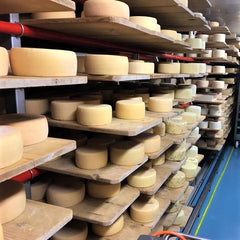
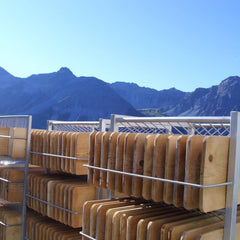
After the boards have been used, they are being washed, dried and sanitized by mother nature in the sun.
Here some pictures of the finished product. We will be getting regular raclette, raclette with garlic and also raclette with peppercorns!
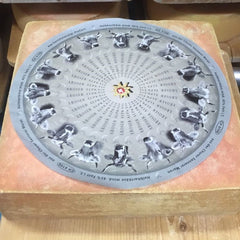
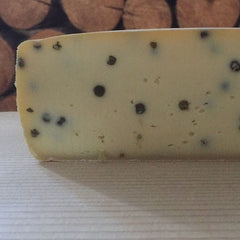
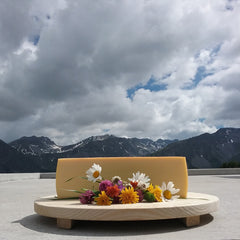
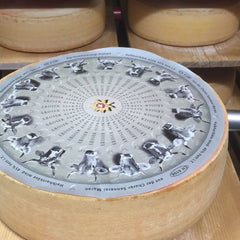
Here a behind the scenes video fromAlp Maran and the master cheese maker Walter Niklaus in action:
